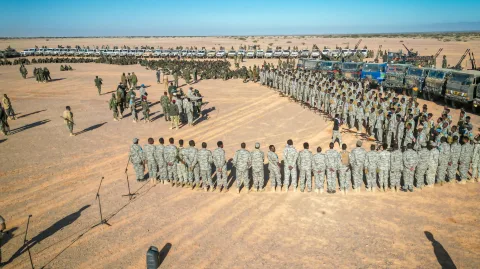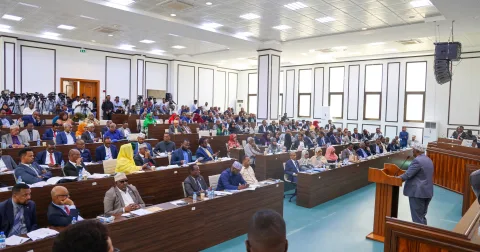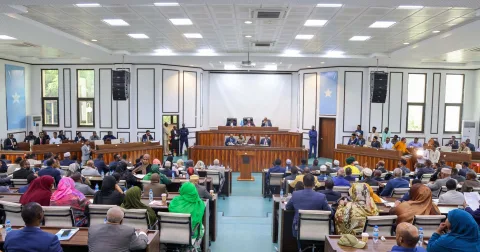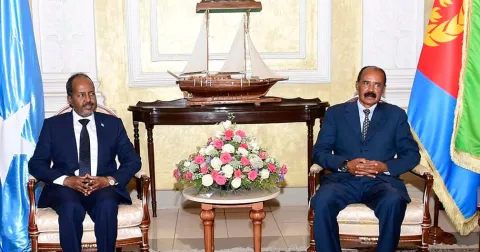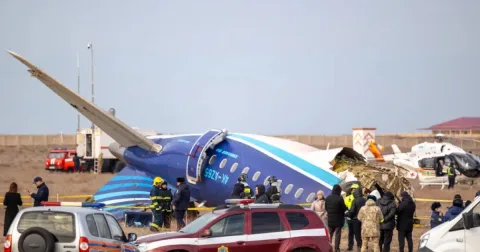The U.S. military is scrambling to make up for lost time in Somalia after President Joe…
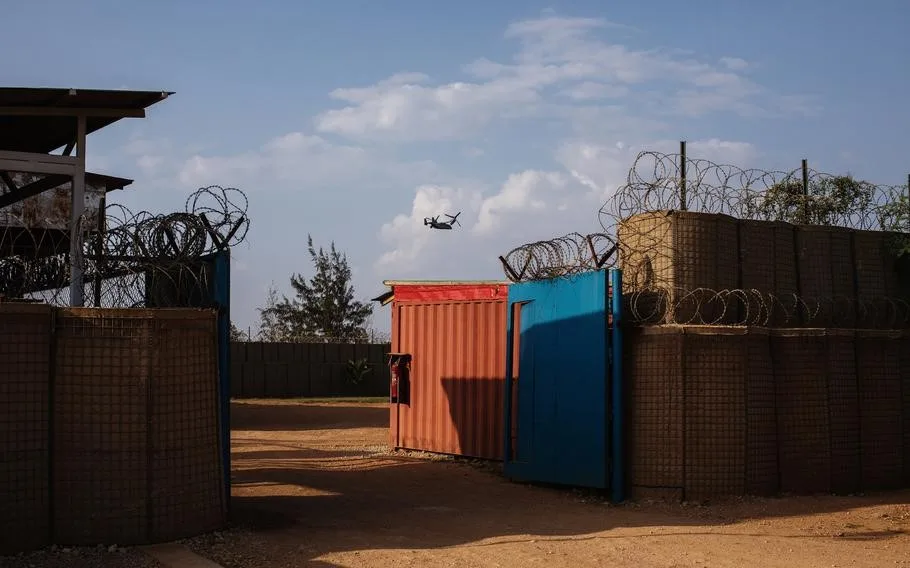
The U.S. military is scrambling to make up for lost time in Somalia after President Joe Biden this spring reversed his predecessor’s order to pull American soldiers out of the country and returned hundreds of them to the fight against one of al-Qaida’s most powerful global affiliates.
The decision by President Donald Trump in the final weeks of his administration to withdraw the troops helped the militant al-Shabab movement grow in strength and size, hampered U.S. ability to provide operational intelligence and air support to Somali troops and delayed the construction of military facilities such as a clinic and training sites, U.S. and Somali officials said.
These officials described the costly and dangerous lengths to which U.S. forces went after the withdrawal order to keep supporting their Somali military partners: the Danab, or “Lightning,” special forces brigade. U.S. troops, for instance, would rotate through the country for three or four weeks at a time, then leave for two before returning, with such frequent movements exposing American personnel to greater risks, according to five U.S. service members.
Despite the official U.S. pullout, the Danab force continued to carry out operations, said commanders from both countries, pointing to its battlefield progress after nearly a decade of U.S.-funded training. U.S. and Somali officials said Danab is slowly helping to change the image of a military often viewed by civilians as bandits in uniforms.
“I felt like it was a real tribute to Danab that they were able to carry on the fight despite the almost abrupt withdrawal of U.S. military support,” said one U.S. service member. He and five other U.S. service members spoke on the condition of anonymity because they were not authorized to talk to the media.
An operation in central Somalia in 2021 illustrated Danab’s capacity to succeed even without U.S. boots on the ground. Acting on a tip from a resident, Danab soldiers say they arrested a man accused of kidnapping a French intelligence agent a decade ago and killed scores of insurgents. The soldiers also flabbergasted the local population in the town of Camaare during the seven-week operation by renting housing and buying food instead of commandeering it, said 2nd Lt. Samir Salim Omar.
The success of this specially trained force in seizing territory from al-Shabab and capturing some of its commanders has been the result of hard-won changes in the Somali military that began before the U.S. withdrawal, according to a dozen interviews with Danab soldiers of various ranks at their training facility, headquarters in the capital, Mogadishu, and at the sites of several recent battles as well as with U.S. and Somali defense officials, military trainers, and civilians and other Somali military and militia forces.
The interviews also reveal the damage the pullout did to the campaign against al-Shabab. A senior U.S. defense officer said in an interview that he had no doubt that the troop pullout – coupled with political turmoil inside Somalia over delayed elections – strengthened the insurgency over the past few years.
“Al-Shabab increased in size, so the physical size number of operators. Al-Shabab increased their cash flow – their resourcing went up. And al-Shabab also increased their physical presence, so they occupied more terrain,” he said.
Military was ‘just for bandits’
Many of Somalia’s military units were originally clan militias. Until a few years ago, commanders often pocketed soldiers’ pay, forcing them to sell their ammunition or guns for food. Recruits trained with sticks, weapons being in short supply. When the United States donated food, fuel and other supplies, they were often stolen.
But the United States needed a reliable partner. So it set up Danab. In 2013, the first group of 100 soldiers was recruited.
“No one wanted to join the military back then. It was just for bandits,” said Lt. Col. Abdullahi Nur — known as Beeryare — the commander now in charge of the Danab brigade. Angered by al-Shabab’s closure of his mosque and school and the jailing of his teacher, he volunteered to be among the initial Danab trainees. He is the first commander Danab has had who has risen all the way through the ranks, a rarity in a country where plum positions have often gone to those with political connections.
At the beginning, recruits lived in old, leaky tents and had only 30 rounds of ammunition each for marksmanship training, recalled Jim Maguire, a former British soldier who works for the U.S. State Department contractor Bancroft and has headed the U.S.-funded training program since the start. Discipline also was a problem.
Still, conditions were better in the Danab force than in the rest of the Somali military, where soldiers could go unpaid for a year. Danab soldiers received regular monthly stipends. In 2020, the unit stopped recruiting from the military and opened to civilians. Strict quotas ensured that its soldiers were drawn from all clans, Beeryare said. Danab has nearly 1,500 trained fighters.
Then a hammer blow fell. In the twilight of his presidency in December 2020, Trump ordered the withdrawal from Somalia of all American troops — about 800 soldiers — as part of his promise to end the U.S. involvement in “endless wars.” The U.S. teams, including those based in the southern city of Kismayo and at Baledogle Military Air Base, where Danab trains, had to leave.
Except they didn’t. Afraid of losing relationships, U.S. troops embarked on their risky rotation in and out of the country.
“It was all extremely disruptive. That was absolutely the worst way to try to advise a foreign army. Awful, absolutely awful,” said one service member.
U.S. soldiers leaving the Baledogle base had to pull out sewage and power lines, remove computers, desks and other furniture, and take away drones, radar systems and other sensitive equipment. For each month spent in Somalia, the soldiers would spend a week and a half setting up equipment and another week taking it down and packing it up, four U.S. service members said. U.S. service members rotating into Somalia would get diarrhea for the first week, because water had stagnated in the systems, the four said.
Each return had to be treated like a tactical operation, one service member recounted. The flights between Somalia and Kenya alone cost $930,000 each time, he said, describing the constant movement as “intentionally inefficient, intentionally dangerous, intentionally costly and intentionally stupid.”
Military contractors refused to fly into Baledogle without U.S. security. They halted construction on training facilities, a runway and a clinic. The U.S. military’s Security Forces Assistance Brigade, which provides training in such skills as marksmanship, weapons maintenance and specialized medical care, no longer visited, because of similar concerns.
A bureaucratic procurement process, plagued by inefficiency even before the pullout, caused deliveries of medical supplies and weapons to be delayed, forcing Danab soldiers to share rifles and pool their own resources to buy medicine and bandages, one of the U.S. soldiers said.
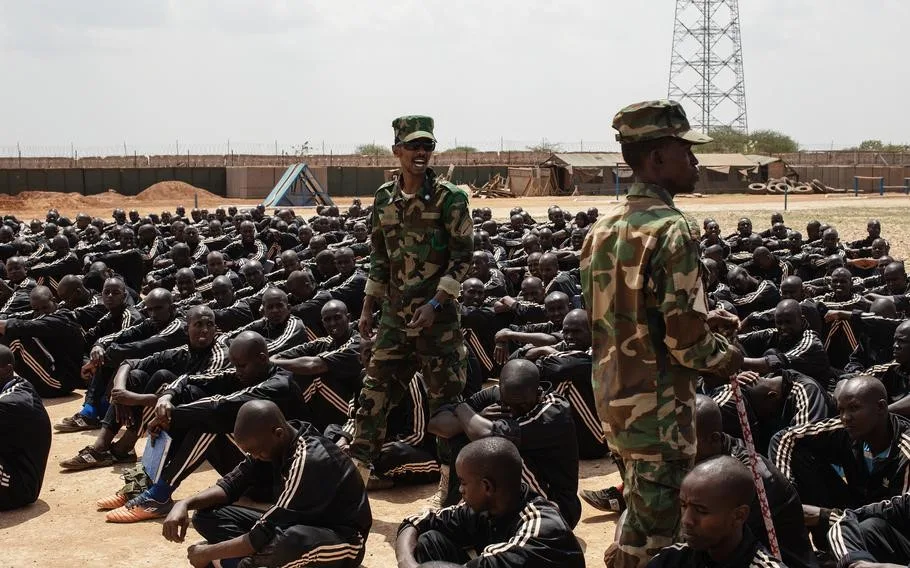
Feeling abandoned
Trump’s withdrawal order left some Somali special forces feeling abandoned, Danab officers recounted. It also hampered the United States’ ability to provide intelligence, reconnaissance and air support for Danab raids and hurt the Americans’ ability to exploit intelligence that the Somalis gathered, said Somali and U.S. soldiers.
“It prevented us from analyzing and exploiting any intelligence from things like IEDs, documentation or phones, or that anything they would bring back rapidly to get quicker effects on the battlefield. Those things couldn’t be done by phone,” a U.S. service member said.
The pullout also potentially disrupted the training of Danab’s commando unit, which targets top al-Shabab commanders and is directly mentored by U.S. Special Operations forces. Neither U.S. nor Somali officials would discuss the impact of the withdrawal, because the program is classified.
Trump’s order did not end American air operations in Somalia. The deputy Danab commander, Maj. Hassan Mohamed Osman — nicknamed Tuure — said the American pullout of ground troops did not affect air support for planned Somali operations, although reserving a plane, helicopter or drone sometimes could take three to five days. U.S. service members said those figures sounded accurate.
But Danab fighters were without air support when al-Shabab showed up unexpectedly close to their bases, Tuure said. So, they fought off al-Shabaab by themselves.
Since the return of hundreds of American troops, starting in May, U.S. special operators have been scrambling to help improve Danab’s battlefield logistics and accelerate training for its staff officers, a U.S. service member said.
“We took about six steps back, and we’ve taken about four steps forward at this point,” the senior defense officer said.
As a result of expanded medical training, for example, the Danab force is saving more of its wounded soldiers, with the ratio of dead to wounded falling by more than half over the past 18 months, said Capt. Hassan Mohamed Mohamud, the physician who heads Danab’s medical corps.
Airstrikes in Somalia, which had spiked under Trump, dipped again after Biden limited strikes to collective self-defense, including to defend Danab. Tuure said that in his experience, the United States now will not strike until Danab has been attacked.
The enhanced training, equipment and ability to call for U.S. air support mean that Danab has begun to serve as a force multiplier for the wider Somali military, especially since a government offensive began in August, about three months after Hassan Sheikh Mohamud was elected as Somalia’s president.
Small Danab units are accompanying other forces engaged in the offensive, said Defense Minister Abdulkadir Mohamed Nur. Danab, he said, also can offer assets including bomb disposal technicians, medics and communications specialists.
So far, the two-pronged offensive has largely cleared al-Shabab from territory nearly 200 miles across in the central Hiran region and in a separate swath of about 120 miles along a key road in the central Middle Shabelle region.
Al-Shabab has repeatedly targeted Danab, bombing recruitment drives so many times that hopefuls must now enter in shorts and T-shirts to show they are not concealing explosives, Beeryare said. The insurgency has stepped up attacks elsewhere, too. In October a truck bomb in the capital outside the education ministry killed about 100 civilians, making it the deadliest such attack in five years.
Pullout of U.S. forces
The temporary pullout of U.S. forces also had left Danab more vulnerable to political pressure. Until Somalia held new elections in May, its president and parliament had been locked in a power struggle, and some Danab soldiers had feared that they would be diverted from fighting al-Shabab and turned against civilian protesters and the president’s political rivals.
In October 2021, some Danab troops were ordered into a battle against the heavily armed Ahlu Sunna Wal’Jamaa militia. This militia is a staunch enemy of al-Shabab, but it also was at odds with the Somali president. A Danab battalion commander and two other Danab soldiers were killed. Furious, the United States withheld support from that Danab battalion for four months.
But Danab fighters largely managed to avoid the political rivalries that splintered the regular Somali military along clan lines and provoked deadly shootouts in the capital. Even as this conflict spiked, Danab soldiers were able to cross the front lines and carry out operations against al-Shabab, said Beeryare. That capability was a testament to Danab’s political neutrality and policy of recruiting from all the clans, he said. Two U.S. service members confirmed his account.
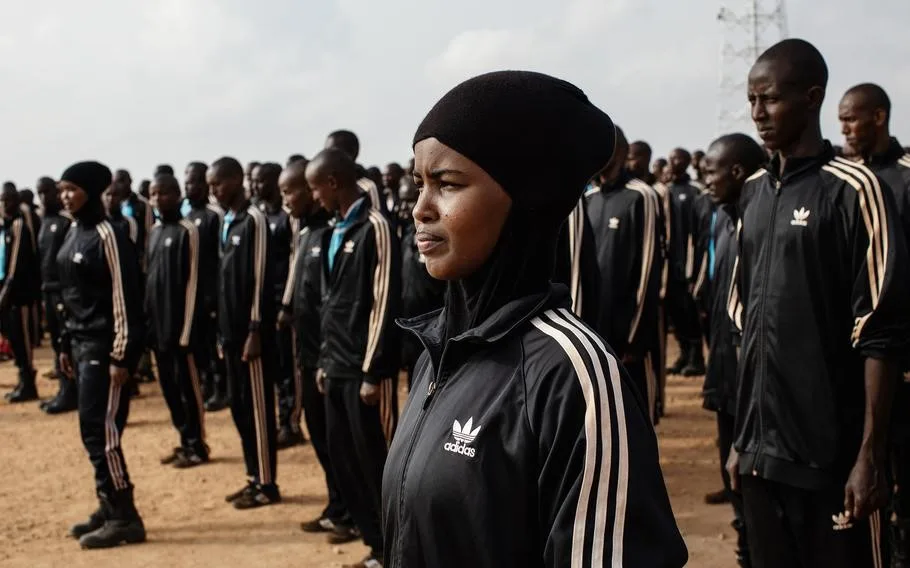
The changing public perceptions of Danab are helping it attract more educated recruits — people such as 24-year-old physician Safia Abdinur, whose best friend was killed in a bombing. She’s among 19 university graduates in Danab’s most recent intake.
“We have been living in fear, but now things are different. Now people are ready to fight,” she said.

